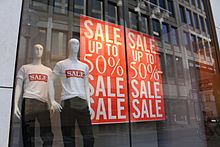
A supermarket is a self-service shop offering a wide variety of food, beverages and household products, organized into sections. Strictly speaking, a supermarket is larger and has a wider selection than earlier grocery stores, but is smaller and more limited in the range of merchandise than a hypermarket or big-box market. In everyday American English usage, however, "grocery store" is often casually used as a synonym for "supermarket". The supermarket retail format first appeared around 1930 in the United States as the culmination of almost two decades of retail innovations, and began to spread to other countries after extensive worldwide publicity in 1956.

Shoplifting is the theft of goods from a retail establishment during business hours. The terms shoplifting and shoplifter are not usually defined in law, and generally fall under larceny. In the retail industry, the word shrinkage is used to refer to merchandise often lost by shoplifting. The term five-finger discount is an euphemism for shoplifting, humorously referencing stolen items taken "at no cost" with the five fingers.

A variety store is a retail store that sells general merchandise, such as apparel, auto parts, dry goods, toys, hardware, furniture, and a selection of groceries. It usually sells them at discounted prices, sometimes at one or several fixed price points, such as one dollar, or historically, five and ten cents. Variety stores, as a category, are different from general merchandise superstores, hypermarkets, warehouse clubs, grocery stores, or department stores.

Save A Lot Food Stores Ltd. is an American discount supermarket chain store headquartered in St. Ann, Missouri, in Greater St. Louis. It has about 900 independently owned and operated stores across 32 states in the United States with over $4 billion in annual sales.
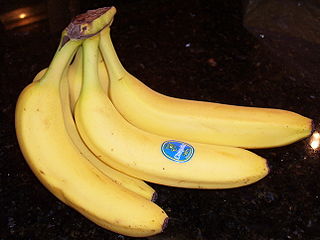
A sticker is a type of label: a piece of printed paper, plastic, vinyl, or other material with temporary or permanent pressure sensitive adhesive on one side. It can be used for decoration or for functional purposes, depending on the situation.
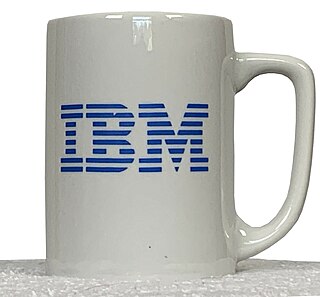
Merchandising is any practice which contributes to the sale of products to a retail consumer. At a retail in-store level, merchandising refers to displaying products that are for sale in a creative way that entices customers to purchase more items or products.
Discount stores offer a retail format in which products are sold at prices that are in principle lower than an actual or supposed "full retail price". Discounters rely on bulk purchasing and efficient distribution to keep down costs.

Zayre was a chain of discount stores that operated in the eastern half of the United States from 1956 to 1990. The company's headquarters were in Framingham, Massachusetts. In October 1988, Zayre's parent company, Zayre Corp., sold the stores to the competing Ames Department Stores, Inc. chain. In June 1989, Zayre Corp. merged with one of its subsidiaries, The TJX Companies, parent company of T.J. Maxx, which still exists today. A number of stores retained the Zayre name until 1990, by which time all stores were either closed or converted into Ames stores.

Retail loss prevention is a set of practices employed by retail companies to preserve profit. Loss prevention is mainly found within the retail sector but also can be found within other business environments.
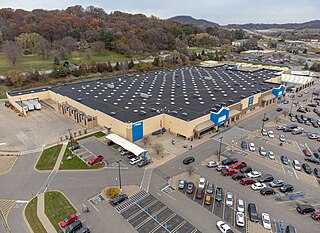
A big-box store, a hyperstore, a supercenter, a superstore, or a megastore is a physically large retail establishment, usually part of a chain of stores. The term sometimes also refers, by extension, to the company that operates the store. The term "big-box" references the typical appearance of buildings occupied by such stores.
Winners Merchants International L.P is a chain of off-price Canadian department stores owned by TJX Companies. Its market niche is similar to the American store TJ Maxx, and it is a partnered retailer to department stores HomeSense and Marshalls.

Big W is an Australian chain of discount department stores, which was founded in regional New South Wales in 1964. The company is a division of the Woolworths Group and as of 2024 operated 179 stores, with around 18,000 employees across mainland Australia and Tasmania. Big W stocks clothing, health and beauty, garden, manchester, kitchenware, toys, pet items, office items, books, televisions, gaming consoles, video games, some furniture items, snack food and small electrical household appliances both on their website and in retail stores.
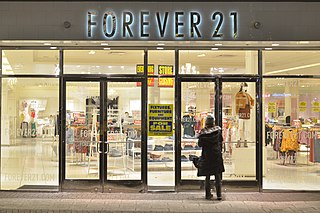
A closeout or clearance sale is a discount sale of inventory either by retail or wholesale. It may be that a product is not selling well, or that the retailer is closing because of relocation, a fire, over-ordering, or especially because of bankruptcy. In the latter case, it is usually known as a going-out-of-business sale or liquidation sale, and is part of the process of liquidation. A hail sale is a closeout at a car dealership after hail damage.

Poundland Limited is a British variety store chain founded in 1990. It once sold most items at the single price of £1, including clearance items and proprietary brands. The first pilot store opened in December 1990 following numerous rejections by landlords who had reservations about allowing a single-price store to operate, fearing it could adversely affect the local competition. An estimated 7 million customers shopped in Poundland every week in 2016, many being female shoppers in the C1, C2, D and E categories. Following a drop in share price of over 50%, Poundland was acquired in August 2016 by Steinhoff International for £610 million.

Visual merchandising is the practice in the retail industry of optimizing the presentation of products and services to better highlight their features and benefits. The purpose of such visual merchandising is to attract, engage, and motivate the customer towards making a purchase.
Revenue management (RM) is a discipline to maximize profit by optimizing rate (ADR) and occupancy (Occ). In its day to day application the maximization of Revenue per Available Room (RevPAR) is paramount. It is seen by some as synonymous with yield management.

An electronic shelf label (ESL) system is used by retailers for displaying, typically on the front edge of retail shelving, product pricing on shelves that can automatically be updated or changed under the control of a central computer server.
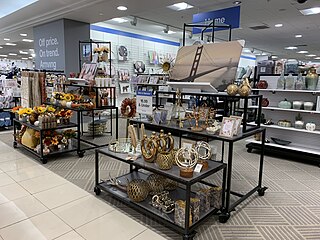
Off-price is a trading format based on discount pricing. Off-price retailers are independent of manufacturers and buy large volumes of branded goods directly from them. The off-price retail model relies on the purchase of over-produced, or excess, branded goods at a lower price, thus being able to sell to consumers at a discount compared to other stores which purchased an initial run. Among the largest retailers of this type are TJX Companies and Ross Stores. The model is more common in countries that import fashion-oriented or household goods, as the discount role in producer countries is usually filled by factory outlets or small-scale open-air marketplaces.

Discount stickers are a price markdown that are used to alert shoppers to goods which have been reduced in price, such as food approaching its sell-by date or inventory in discount clothing or outlet stores. Some stores, especially discount clothing stores, have been accused of using discount stickers to create the impression of price markdowns when there is none.
The retail format influences the consumer's store choice and addresses the consumer's expectations. At its most basic level, a retail format is a simple marketplace, that is; a location where goods and services are exchanged. In some parts of the world, the retail sector is still dominated by small family-run stores, but large retail chains are increasingly dominating the sector, because they can exert considerable buying power and pass on the savings in the form of lower prices. Many of these large retail chains also produce their own private labels which compete alongside manufacturer brands. Considerable consolidation of retail stores has changed the retail landscape, transferring power away from wholesalers and into the hands of the large retail chains.
